Lorina Stephens's Blog, page 13
November 28, 2020
Writers’ Craft 8: World Building
Doesn’t matter what genre of fiction you’re writing, it is imperative you create a real and believable environment. Do this successfully, and your reader becomes further immersed in the story you’re telling not only through excellent characters and point of view, but through the world you’ve created.
Geography
Oxford Dictionary describes geography as: the nature and relative arrangement of places and features.
Simple enough.
Put another way, you as the writer, must understand what land and water features there are, how civilization has adapted to those features, where those populations lie, and what those civilizations look like. I know, I know, I can hear you groaning again: another outline? Yes. Another outline, perhaps even a map, or several outlines and several maps. Why? Because you need to understand this world intimately so that you can write with absolute authority about this place.
If you’re writing about Earth, certainly Google Maps and Google Earth allow you excellent, current visuals about all of these parameters. Equally, if you’re fortunate enough that you’ve travelled to these places, or will be able to once this pandemic is over, that physical knowledge will stand you in good stead, bring a veracity to the geography you describe. However, if you’re writing about a non-Earth geography, this is where your imagination needs to take over, and that means you need to create that world from rock to sky, plant to animal and insect, and most of all the species of character you’re dealing with and how they interact with their world. Trust me on this, it’s far better to create too much background information from which to draw, than not enough. It’s in that research, or development, you become comfortable with your subject, and that comfort then lends authority to what you write.
Geology, climate and environment
[image error]
You’re going to say, “Why is she repeating herself here?” Well, strictly speaking geology, climate and environment are separate from geography. Geology deals with how your earth was formed. Why is that important? Well, in the case of N.K. Jemisin’s stunning science fiction series: Broken Earth, it’s all about a remarkable and foreign geology. Jemisin understands this alien world so intimately there isn’t a single moment in the story that doesn’t ring with the reality of what she’s created. The same could be said for J.R.R. Tolkien’s unforgettable opus, The Lord of the Rings. It is a well-known fact Tolkien wrote an enormous volume of backstory for this trilogy, and because of that the world of Middle Earth leapt off the pages and inhabited the imaginations of generations of readers.
 J.R.R. Tolkien from New Statesman
J.R.R. Tolkien from New StatesmanWhich brings me to climate. Why is that important? Again, because climate affects everything from how your characters interact in their world and through their civilizations. Climate affects mood and movement. And all of that can and should be essential tools you use to develop character, plot, and overall tone of your story. I think back to Joseph Conrad’s novel, Heart of Darkness. The novel is set in the jungle of The Congo. The story itself is one of mystery, oppression, anxiety, and dark, brooding tale. And Conrad’s description of the climate of the Congo River is executed with such intimacy that it permeates everything. We feel the heat. We feel the monsoon rains. And in turn the protagonist, Charles Marlow, tells his story through the lens of this humid, foreign, fearful climate. There is an implacable inevitability which results from Conrad’s descriptions of climate.
And climate inevitably leads to environment, because environment is utterly fused to climate. One creates the other. As in Conrad’s classic novel of tropical climate, the environment is shaped by that hot, humid climate. Thus we have the jungle of the Congo, an environment which creates a breeding ground for all manner of reptilian, insect and mammalian life which to those early Western explorers seemed as foreign as the Moon to those first astronauts. And, again, the environment Conrad relates is fused to Marlow’s mood and actions. There is utter authority here, truth.
Social structures, language and mores
It could be argued, and I would say successfully, that social structures, language and mores are shaped by geography, geology, climate and environment. And all of that affects how your characters, and how your plot will unfold. So, what social structures are there in your society? Is it based on a feudal system, or an oligarchy, and where does your protagonist sit in that structure?
Language? Certainly language reflects the customs and mindset of a society. Take, for example, the Spanish term for: I really like this, which is: le gustó mucho. Quite literally translated from English to Spanish, the phrase refers to taste, as in: this tastes good. So, that reveals something about Spanish society and the historical importance of good food, and how good food makes you feel.
And language also reveals a society’s mores. So, in your story, what are the unspoken, accepted social conventions of your society? Is a handshake an acceptable and respectful form of greeting, or is physical contact anathema?
All of these minutia are paramount to creating a believable, immersive story for your reader, especially when these elements are revealed through the actions and thoughts of your characters.
How to do all that? Well, to put it in perhaps simplistic, facile terms: let’s pretend. Just play that game we all played as children. I don’t know about you, but I was very adept at playing Let’s Pretend. I’d build worlds and customs. How many of you, for however brief a moment, believed the floor was lava, and you had to jump around the furniture, much to your parents’ chagrin, to avoid being horribly incinerated by the deadly floor? You believed it. Now you’re going to write about that with the same intimate detail and conviction.
We’re dream-makers, we writers. We either virtually visit our own world and relate that to our readers, or we create new worlds and invite our readers to come along the journey. When you write through the eyes of your character, that world blooms in your reader’s imagination, and thus we create this remarkable, silent communication which no one hears, but we all witness. Magic.
November 20, 2020
Writers’ Craft 7: Dialogue
One of the common problems I see as an editor is clumsy dialogue. So often a writer feels the need to explain the dialogue with all manner of cues and instructions, as though they were writing a screen play, or giving notes to an actor. Writing dialogue for general reading is quite different. It requires that you, as the writer, remove yourself and instead choose your words, and how you employ those words, with precision, allowing your reader to interact and fill in the surround. Go too far, and you have those actor’s notes. Don’t go far enough, and you leave your reader in a void.

How far is too far?
Good question. In my experience, and to my aesthetic — and remember, art is subjective — using dialogue identifiers and notes is going too far. For example:
“I’m going to the store,” he said grumpily.
“Again?” she whined. “You just went out this morning.”
“Well, someone forgot to add milk to the list,” he growled.
She softened her voice and said, “Couldn’t you use cream?”
He shot back, “Like hell.”
Yeah, pretty pedantic and plodding, wouldn’t you say? But you’d be surprised how often I’ve seen dialogue like this.
There’s an opportunity missed here to not only create excellent tension, but character development through tighter dialogue. Perhaps like this:
He knew he allowed his anger to show, perhaps unfairly, but before he could stop himself he said, “I’m going to the store.” And immediately he saw his anger hit her like a blow, and watched her brace for defense.
“Again? You just went out this morning.”
“Well, someone forgot to add milk to the list.”
That one landed full force, and he had to strain to hear her when she said, “Couldn’t you use cream?”
“Like hell.”
Now there’s heightened tension. We now know something more about the main character, have established point of view, and allowed the dialogue to flow along naturally, much as it would in an actual conversation.
Generally, once you’ve established the speakers with the first two exchanges, there’s often little need to identify the speakers thereafter. And by eliminating all the stage directions, you’ve allowed your reader to better interact because of the rapid fire flow of the dialogue.
In the first segment of dialogue, we are allowed inside the head of the main character. We know he’s angry, knows he’s being a jerk, and apparently is either so exasperated, or too much of a jerk, to control his anger. We then see the other character’s reaction through his eyes, thereby further establishing point of view.
In the next segment — her reply — there is no need to identify the speaker, because that’s already been established in the previous segment. By doing that, by just allowing her words to sit on the page, we allow tension to build because there’s nothing else distracting us from what she says. The same result occurs in the third segment of dialogue. After that we establish a pause, a further opportunity to develop the scene and character by not only allowing us to see the situation through the main character’s eyes, but to hear her subdued response through his senses. Then the full blow of the conversation is delivered in a short, sharp response of just two words, no descriptors. Bam.
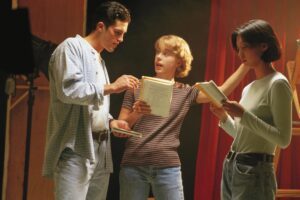
Information dump and long narratives through dialogue
Sometimes we use dialogue to convey background information in our stories. That’s perfectly fine. But you should be mindful of keeping tension tight and not arresting the action by waxing poetic about some thing, or adventure, or parable. It’s important to remember that throughout your story you’re constantly working to keep you reader’s attention. There are a lot of things to distract that reader: social media, household, coffee, that walk. So, in order to keep that tension, break up your information throughout the dialogue, have your characters interact just as they would in real life. Let’s face it, that’s what we’re trying to do in our stories, or should be: creating a verisimilitude of life.
I remember clearly reading a naval historical novel by a well-known author of the genre. There was a section in the story where the crew and ship were soon going to face battle with an enemy they’d been chasing, a plot point which had been developed throughout. But just as they’d sighted the enemy’s sails on the horizon, the author decides to wax poetic through dialogue about a particular knot a seaman had developed and employed, and went on about it for about three pages, as I recall. By then the entire sense of the chase and breathlessness and danger had spilled overboard, and certainly left me fuming. While it’s wonderful to include detail, in this case the conversation that had been so rife with tension regarding their strategy and battle plans was entirely eclipsed and assassinated by a knot.
Don’t do that.
Break up your information throughout your dialogue, as I’ve said.
Allow me to use an example from my novel, From Mountains of Ice.
“The harvest looks bountiful,” Vincenze said around a mouthful of bread.
Aletta cast a glance over the fields, perched as they were on a small rise. “Bountiful, yes. The land has had an opportunity to rest, and all that firing did the earth good, despite our feelings on the matter.”
“It would seem the same could be said for the spiders?” Sylvio said.
Vincenze nodded, swallowing. “The tree spiders are back, yes, spinning webs the likes of which I’ve not seen in many years.”
“Big?”
“Big? There were some webs so large they spanned trees, some as big as two hundred metres.”
“You exaggerate,” Sylvio mumbled.
“He tells the truth, amore mia,” Aletta said, setting down the wine jug and watching Vincenze carefully. “Two hundred metres.”
Sylvio kept his astonishment under control, wondering what it could mean that the spiders spun such large webs. “Well, at least we’ll be able to make angeli strings.”
Vincenze nodded. “I’ve a plentiful harvest. We’ll be able to fit a large percentage of the bows for trade with angeli.” He sipped from the wooden beaker of wine. “How look our goods for trade?”
“Good.”
“Good goods,” Aletta said. “Information, my love. It helps in conversation when you provide information.”
Sylvio grunted. “I was getting to it.”
Aletta let out a cluck of exasperation.
“We’re going to have grain to trade,” Sylvio said, throwing Aletta a frown. “That will be a first in two years. Should fetch a good price at market in Reena –-”
“And horses,” Aletta said. “The foals from last year are proving healthy yearlings.”
“And horses,” Sylvio agreed. “And it would appear we’re also going to have a good selection of bows, many with angeli strings – some with angeli strings.”
“Any decision on selling the arcossi?” Vincenze asked.
The arcossi. Debate among the bowyers and the villagers about selling the arcossi had been passionate and divided. There were some archers who swore there were voices in their heads when they used the bows Sylvio made, telling them how to draw, where to aim, when to loose. And when pressed Sylvio admitted there was something uncanny about them, of having images like memories swim through his head as he carefully sliced thin veneers from the bones, glued bone to wood, tillered and teased a laminated stick into a weapon of deadly, almost sentient, grace. It hadn’t been until he’d worked with Vincenze’s sister’s bones that he could attest to hearing voices. Now today’s occurrence. That disturbed him.
To offer the arcossi at market was to sell the bones of one’s mother, or father, one’s daughter or son. It was like peddling holy relics. Here, come own the finger-bone of the goddess Vitalia and protect yourself from infertility! Here, come buy this arcosso that was my brother and thwart your enemies!
“They’ve agreed,” said Sylvio.
“But it was bitter,” said Aletta.
“I can imagine,” said Vincenze and he looked out across the fields.
So here I was trying to impart information about the bows known as acrosso. I didn’t want a huge information dump. That information could be built upon in subsequent segments. But it was important to impart enough information throughout the dialogue here in order for the reader to find some footing. And it was also important to keep the dialogue flowing, allowing for what might be normal pauses in speech as a person reviews what they’re about to say and sorting the flashes of information in their head. It was also a great opportunity for character development. We know Sylvio is a bowyer, that he finds making the acrossi strange, even disturbing. We know he has a deep and easy relationship with his wife, Aletta, as evidenced in their banter. We know Sylvio is a reluctant, even reticent person. And all of that is established through hints in the dialogue, and the information around that dialogue.
Ellipses and em dashes
Ellipses and em dashes are excellent tools when conveying certain information. However, in my experience as an editor, they are overused. Think of using them like spice and seasoning. Too much salt, and the dish is inedible. Too many chilies and you’re gagging.
So, if you have a trailing thought, great, use ellipses (three within a sentence, four at the end, wherein the fourth becomes the period to close the sentence.) But make ellipses rare, otherwise it will lose effect.
The em dash is also an effective tool if used sparingly. I used an em dash in the dialogue above where Aletta interrupts what Sylvio is saying. That’s a perfect use of an em dash: to indicate an interruption or an abrupt ending. Em dashes can also be used instead of parentheses where you have a bit of information or dialogue that is, if I may, parenthetical to the main discourse.
But generally, use a light hand with ellipses and em dashes. Let your words speak for you, not gimmickry.
Paragraph breaks
Generally, you employ a paragraph break for every change in speaker. By doing so you create a visual clue for your reader. And each segment of dialogue must be accompanied by opening and closing quotation marks — unless.
Unless what your speaker is saying spans more than one paragraph, in which case there is no closing quotation mark at the paragraph break, but there is an opening quotation mark at the beginning of the new paragraph. By doing so, you establish that it is the same character speaking. Thus:
“I’m going to the store now. I won’t be long.
“Oh, say, could you just check to make sure the order is ready? I forgot to do that. Call me when you have.”
“Sure. No worries.”
So, here we have two speakers, the one who’s going to the store, and the one who’s not. The first two lines are clearly the first speaker, while the last is the second. There are no closing quotes at the end of the first line, establishing that the second line belongs to the first speaker. We know there is a second speaker by the third line because of the closing quotes at the end of the second line. Clear as mud?
Just write dialogue as you would speak it
I guess the brunt of it all is to place yourself in the situation you’re writing, and create the dialogue as if you were a part of it. Don’t tell the dialogue. Speak the dialogue. And after you’re done writing that scene, read it out loud. If it flows naturally, and makes you want to find different voices for the characters, you’ve probably done your job well. If it sounds clunky, well, maybe you need to revise.
And as always, remember art is subjective. There isn’t actually any one correct way to do anything creative. Don’t be afraid to bend the rules. Just make sure when you do bend the rules you’re engaging your reader and keeping them turning the page because they’re positively entertained and enlightened.
November 9, 2020
Writers’ Craft 6: Tense
Choosing a tense for your story usually isn’t a big deal. Most fiction and even nonfiction is told in past tense, as in: They went there, and then they travelled further.
Why writers do this is not entirely clear. Certainly the practice of writing in past tense has been around a very long time. Mallory wrote Le Morte d’Arthur in 1469, and it is in past tense. Homer’s epic poem, Odyssey, even in the original Greek, was written in past tense, and that dates back to around the 8th or 7th century BCE.
It would appear employing past tense in writing is simply a comfortable, accepted form, perhaps because it most emulates how we converse. Most of what we discuss among ourselves tends to be in past tense, unless we’re speaking regarding future events. But for the most part, we recount events when in conversation. It’s usually how we tell an anecdote, recount our days among friends and family. Not that we don’t speak in future tense; certainly we do. But it’s not the tense we so easily and customarily slip into.
So, it only follows we naturally gravitate to past tense when writing. And that’s perfectly fine.
Unless…
You want to wake up your reader
If it’s a shove-your-reader-off-the-chair effect you’re going for, then you may choose to write in present or future tense. Both are arresting. Both require a sensitive hand else your work will end up so unapproachable as to be unreadable. Certainly there are some novels out there which have effectively, even brilliantly employed both present and future tense.
Present tense
Writing in present tense is just that: all the action happens right now, i.e: She picks up the newspaper and scans the headlines, feels frustration with the barrage of sensationalism, and tosses it back to the table.
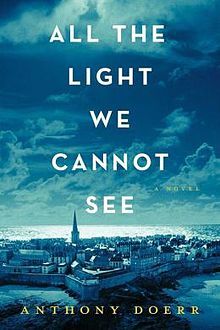
Present tense gives immediacy and urgency to your story. There is nothing passive about present tense. And in the right hands it can be astonishing and brilliant; in the wrong it can be outré and unreadable. Novelist Anthony Doerr employed present tense in his novel All the Light We Cannot See, which went on to win the 2015 Pulitzer Prize for Fiction, and the 2015 Andrew Carnegie Medal for Excellence in Fiction.
Andre Dubus III employed the same technique in his widely popular novel, House of Sand and Fog.
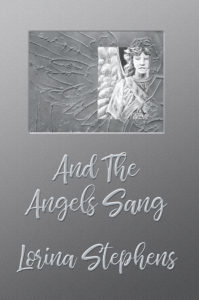
When I wrote the cover story for my collection of short stories, And the Angels Sang, I chose to tell the story in present tense, because it is a deep character POV, that of Father Jean Brébeuf in his last moments of life. He is being tortured, horrifically, and I wanted to examine what he might have thought in those moments, how he might have slipped into hallucination as so often happens when we are thrust into extreme trauma. There is a sense of disconnect in those moments. And so the only way I could think to convey that sense of disconnect, was to write the story in present tense, because the story is happening right now. His pain is right now. And I wanted the sense of that to be right now for the reader. So, yes, present tense was chosen as much for shock effect as for a literary device.
Apparently it worked for one reviewer:
Lorina does a masterful job of summarising a lifetime of devotion to the cause in the final, frantic thoughts of Father Brébeuf. Delirious, near out of his mind with pain, he imagines the forest grove around him the pillars of a glorious cathedral. Similar fantasies transform his horrific death into a mystical rite of passage toward paradise. What strikes atheists like myself as an idiotic belief system here becomes very real, the key to salvation and transcendence, and his pity for his tormentors, utterly convincing. It takes exceptionally good writing to put you deep into the mind and thoughts of so alien a being.
R. Graeme Cameron
future tense
Even more difficult to write is a story told entirely in future tense. He will go down the road, meet a dog, and the dog will bark and then sniff his hand. He’s going to feel a pang of homesickness because of that filthy cur.
There is again a sense of disconnect and tension employing a tense other than past, in this case a feeling of inevitability, even futility, because the uncertainty and nebulous nature of the future now becomes a clear reality in the narrative. There is no ability to deviate from what is seemingly pre-ordained. And once again, this tense can be exhausting not only to write, but to read, so choose carefully.
Novelist Carlos Fuentes did so in his short novel, Aura, which, by the way, is also told in second person.

There is a sense of the omniscient in a future tense story, perhaps because future tense, as Carlos Fuentes demonstrates, is most often told in second person.
What’s the correct thing to do?
Whatever suits you and your vision. That’s the correct thing to do. Sure, there are lots of people who are going to tell you to play it safe, to abide by some set of unwritten and uncanonized rules. But there are no rules. Not really. Art is subjective. Yes, you’ve heard me both say and write that previously. It’s true. Sure, you need to know the fundamental tenants of writing. But you also need to know how far you can bend them to create something astonishing, even transcendently memorable.
So, don’t be afraid to experiment. Write. And then write some more. Doesn’t matter if any of it is bin material or readable. Just write. Do like every other artist in every other discipline, and just create work. In the end that’s what it’s all about. Or should be. At least in my opinion.
November 1, 2020
Writers’ Craft 5: Point of View
Point of view is simply that: who is telling your story?
While that definition may be simple, sometimes choosing who is telling your story can present a conundrum to the author. Is the story better suited to first person or third person? Or is your story compelling enough it requires second person?
Perhaps a review of what those points of view actually mean, and why you might chose one, is called for.
First Person
First person point of view is easily identified as an I story, meaning there is one point of view, told from the main character, or narrator’s, perspective. For example, the opening sentence of my novel, Shadow Song:
I remember the summer I met Shadow Song was so green it hurt my eyes.
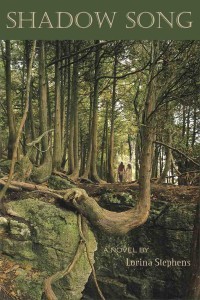
In this case, the story is told entirely from the perspective of Danielle Michelle Fleming. It is her story, and while the story she tells deeply revolves around the characters of an Anishnabe midewewin, and her uncle, Edgar Fleming, it still remains her story. We discover the world of the backwoods of 1830s Upper Canada from her perspective. We experience her adoption and inculcation into Anishnabe society, and that tight perspective very much conveys the sense of a stranger in a strange land.
Because of that point of view, the story becomes intimate, as though she were sitting across the fire relating to you her experiences.
Employing first person narrative does just that: creates intimacy. It also narrows the scope of the story because everything must be seen and experienced through the eyes of that one character. So, being able to jump into the head of a secondary character isn’t possible, which means you have to be sure your main character has a strong enough voice to carry the story.
However, it is also possible to tell your story from several points of view while still employing first person. I did just that in my novel The Rose Guardian, in which there are three distinct characters, each with their own narrative, two of which are told from first person, and the third from third, person. I chose to tell the story in that fashion in order to create a very strong sense of time and voice. It’s tricky writing, and not for the faint of heart.
Second person
Second person perspective is a you story and requires a controlled, sure narrative. It can be clumsy and a bit outré if you’re not careful, and perhaps is better suited to short fiction than a novel, simply because it can be a bit demanding for your reader. It’s an arresting point of view. Very effective if handled well. Plain silly if it’s not.
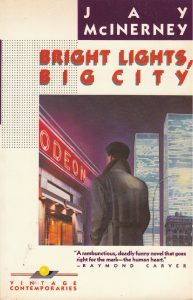
Apparently the American novelist Jay McInerney wrote his acclaimed debut novel Bright Lights, Big City in second person. I haven’t read the novel, much less know the author, so I cannot speak to the efficacy of this point of view in his work. Of course, in the end, it’s just one person’s opinion of a piece of art, and art, as we all know, is subjective.
Still, if you’re going to use second person, be very sure of your story and narrative.
Third person limited
Third person limited is the most common point of view a writer can employ, a he/she/they story. It’s an easy point of view to write, let alone read, and allows for greater creative latitude, and breadth of story, because you can choose to tell the entire story from one character’s third person narrative, or many characters by way of alternating chapters or sections between characters. It is important when writing third person limited to be sure you’re writing from one character’s perspective, and only one, in each section of your story.
Unless….
Third person omniscient
Ewww.
Sorry, was that my out loud voice?
[image error]
It’s unfair of me to make that statement, because, again, art is subjective. To my taste, third person omniscient is a lazy writer’s fallback. Frank Herbert used it extensively in his epic SF series Dune. Given the huge appeal of the series, my antipathy to the point of view will seem unwarranted. And certainly other genre writers have employed this literary device. There’s nothing really wrong with the point of view. It still employs the he/she/they perspective, but switches between characters within the narrative flow so that in one paragraph the reader is experiencing one character’s actions and thoughts, and further down the page the reader is now experiencing a different character’s actions and thoughts. Omniscient. Just like the definition states.
What I personally don’t like about this POV device is the lack of character depth which occurs. I always feel as though I’m skimming across the surface of the story, being kept at a distance. It leaves me hungry, like only being able to eat the crust of a pie and not the whole thing, filling and all.
But, again, that’s just one person’s opinion.
It’s your story
Whatever point of view you choose, stick to it. Make it your own. In the end it’s your story, and only you can really know how you’re going to tell it, and who is going to be your voice.
If you’re looking for a book on the subject, I do recommend an excellent primer by Orson Scott Card: Characters and Viewpoint.

And most of all, just write.
October 26, 2020
Writers’ Craft 4: Character Development
One of the most powerful and essential skills in your writing arsenal is the ability to develop and write believable characters who step off the page into the minds of your readers. But it would seem it’s also one of the hardest skills to effectively master. Do it well, and you haunt the thoughts of your readers. Do it wrong, and your reader closes the novel, likely never to return either to that novel or any other written by you. Good character development drives plot, action, environment and mood. Good character development is of profound import.
Who is this person?
In my opinion, the only way you can write a believable character is to know that character, and that starts with a detailed character sketch, and that works back to the third installment of this series: Outlining.
While creating a character sketch isn’t necessarily part of creating your outline, in my experience it runs in tandem, because as you’re evolving your story, you’re also discovering more about who your main character, and even subsidiary characters, are. There are no ultimate methods of creating those character sketches. What I’ll present here are some methods I’ve found work for me. Adopt or adapt as suits your needs.
The genesis of all my novels always involves a main character as one of the main ingredients. At first I have just a nebulous understanding of who this person is. As I develop my outline, and write, I come to better understand who this person is, and that’s when I sit down and develop a character outline. It often becomes quite detailed, with extraneous information which will never make it into the novel, but it does inform how I present that character, why they do what they do, how they feel, their raison d’etre, if you will. I list things such as:
physical description, age and gender
nationality
religion or spiritual belief if that is germane to the story
how they survive, as in how they earn their living, if they’re self-sufficient, or beholden to someone/thing for their existence
are they in a relationship/s
what is their place in the society in which they live
fears, likes, dislikes
soft and hard skills; i.e. are they adept at communication, negotiation, or inept? Can they nurture, or are better a destruction, apathetic, or narcissistic? Can they code programming? Can they sail a ship? Wield a hammer? A sword? A gun? Can they sew and maintain clothes? Make shoes? Grow a crop? Tell what kind of rock they’re walking over? It’s this part of the character sketch which often becomes the bedrock of how I choose to have the plot unfold through my character’s viewpoint.
are they well-travelled, or not, and if not do they have an understanding of the world or environment beyond them?
From those essential details develop others which allow me to fully understand who is this person. If I understand them intimately, am able to have an informed conversation with them, then at that point I know my reader will believe that character to be real as well.
How to convey that character to your reader
Too often I’ve read a manuscript in which the opening paragraphs describe how their main character looks and feels. That method, in my view, immediately sets up a cool distance between me and the character, because I’m aware of the writer, not the character and their world. The writer is telling me what’s going on. The character isn’t.
I’ve also, to my dismay, come across too many instances in which the character has been completely eliminated from any environmental description, thereby effectively diminishing the importance of character. It’s character which drives your story, or should be if you want to fully engage your reader.
Allow me to use an example I created in an earlier post about submissions.
In the post I used a well-known clumsy opening statement:
It was a dark and stormy night.
Which I suggested could become:
She stood there shivering, rain sheeting down her face, wondering not for the first time what she was doing out on such a night, in such a storm, with the wind howling like her own thoughts.
Now the weather is part of the character. There’s tension because she’s shivering. Is it from cold? Is it from fear? Perhaps fear because we are then given the clue she’s distressed as indicated by the phrase: howling like her own thoughts.
That’s just one very basic example of good character development, let alone a good opening paragraph.
Or take a look at this example:
She was tall, dressed in green taffeta that rustled against her petticoats and hoop, her long hair pulled into a crown of dark, chestnut curls. There were pearls at her throat. She unfolded her fan and said in a husky voice to the gallant approaching her, “My dance card is full, but I could make an exception for you.”
This is all kinds of wrong, yet we see this sort of writing so often in many period romances which flood the market. It’s consumable, forgettable, and could definitely be better. If this story is being told from this antebellum femme fatale’s point of view, the third person observations are out of character. Certainly the gallant approaching her might observe these physical details, but it is unlikely she would. Better not to describe any of this, allow your reader to fill in the gaps in this case, because the fact she’s tall and speaks in a husky voice are all irrelevant, extraneous points which do nothing to develop her character. Instead, it might be better written thus:
When she saw him approaching, she knew immediately he’d observed the quality of her green taffeta gown, the expanse of its skirts. She’d chosen her attire carefully, knowing she’d have to be the perfect bait tonight. Everything depended on it. And to secure this traitor’s attention, she offered another enticement when she pre-empted any introduction by saying, “My dance card is full, but I could make an exception for you.”
Now the narrative is entirely in her head, a very tight character point of view, which develops clearly and with interest who and what she is. I chose to eliminate any description of her hair, because it’s not germane to the action or her point of view. We know she’s involved in some sort of subterfuge or scheme, and that further develops her character because it raises the question: is she a spy, or a Scarlett O’Hara on the hunt for a husband? We know she’s an assertive person, willing to take chances, because she’s just breached etiquette, and we know this without being told. We know this because it’s just part of the action. We haven’t been told by the writer intruding upon the narrative.
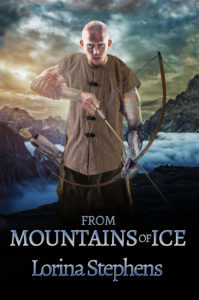
Allow me to dissect for you a passage from my novel, From Mountains of Ice.
The porter at the gate of Portelli’s home, once Sylvio’s, immediately admitted his former employer, bowing, uttering greetings. The man rushed before Sylvio, letting fly commands to servants as he passed to have Sylvio taken to the Sindaco’s study, to have refreshment brought. With as much grace as he could muster Sylvio followed the servant he was handed off to, trying to alleviate the discomfort he knew these people felt on the rare occasion he entered his confiscated, reallocated, ancestral home.
What do we infer from this short passage? We are told Sylvio enters Portelli’s home, which was once Sylvio’s. We are shown how the porter reacts in a fashion of deference to Sylvio. And we are given a revelation into Sylvio’s character in the fact he’s mustering grace, feeling uncomfortable with the attention and respect he’s being shown. That may indicate a humble person, someone self-effacing, and also someone who takes into consideration the feelings of those around him because of the fact he does attempt to muster grace instead of feeling this attention was his due and therefore the servant beneath his consideration or care.
Be your character
How you convey your character to your reader has to come from your own deep well. You have to know your character so well that you can speak with their voice. Or put another way, be your character.
That can be difficult and uncomfortable for some writers, because it means you allow yourself to open up and let your own emotions, feelings, and responses flow out into the story. It creates a certain vulnerability at times. But it also allows you to write characters who are true, and real, and believable. So, if you’re writing a tense scene, get inside your character’s head so deeply that you feel your heart skipping. If it’s a tragic scene, allow yourself to cry. If it’s a moment of halcyon, allow yourself to slide into the beatitude of the environment your character is experiencing, and then let those feelings, imaginings, flow out from your mind into the mind of your character, and from there into your scene. There is truth in this process. There is believability. And in doing so you will have built upon the development of a character who will be memorable, someone your reader will want to know, and will think about long after the last page has been read.
October 22, 2020
Writers’ Craft 3: Outlining
I was going to make this entire Writers’ Craft series as vlogs. However, I have a problem with my ISP, in that they have not upgraded the lines in our wee village, and so uploading to YouTube is problematic. The first two videos required an overnight upload, with nothing else eating up broadband. The third one has been a bust, I’m afraid. I’ve tried four times now. The first three attempts resulted in 3% upload after 24 hours. The last attempt stalled at 26%. And I’m out of patience. So, I’m back to the written word, which I suppose is appropriate given I’m supposed to be imparting wisdom on the creation of the written word. Life is full or ironies, say what?
Creating an Outline, or why bother?
I know of a good many writers, be they novice or experienced, who ask that question: Why bother outlining? In my experience, outlining is an essential tool if you’re going to write.
Outlining saves time, because the need for extensive revision will be reduced. You’ll know where you’re going with the story, and why, rather than employing the ‘panster’ method of just writing without any idea at all where you’re going with the story.
Outlining adds cohesion to plot progression, because you’ve thought out your story ahead of time.
Outlining helps you to solidify character development.
Outlining allows you to develop literary devices throughout your story by way of foreshadowing, pacing, and when to introduce a character or plot element.
Outlining helps to identify any further research you’re going to require.
How to create your outline
I use Word or Excel, depending on the complexity of my plot. Normally I use Word, and lay things out by chapter or section, and often pre- or append character sketches as well as world and environmental details. However, when I wrote The Rose Guardian, the story was a bit more complex, employing three different voices in three different timelines, and because of that I used Excel so I could easily scan and organize, as well as keep the continuity of the overall storyline. That also allowed me to clearly define character sketches which allowed me to use those influences in other sections.
I remember well interviewing Marian Fowler, a great Canadian biographer (Blenheim, Below the Peacock Fan, In a Gilded Cage) who was a stickler for accurate research. She used 3×5 cards to outline her biographies and research, and then pinned the cards to a board, or laid them out on a table in her office. I did often wonder what she did if a strong breeze blew through the window. But it was a system which stood her in good stead for many decades.
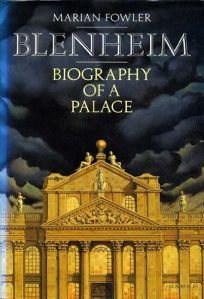
Other writers I know have written points out by hand on sheets of paper, and then organized those sheets in binders of folders. Others yet have used sticky notes on a wall near their computer. Some have even gone to the trouble of creating visual sketches, working out an actual storyboard.
Just find a system that works for you and use it. You’ll be grateful you did when it comes time to do your revision.
An Outline is a guide, not a monument
It’s important to remember, as you write, your outline is a guide, not a rigid format to which you must adhere. Things occur to you as you’re writing, new ideas, change in plot, change in character, and that’s the way it should be. Just make note of that in your outline and adjust accordingly. I think of an outline as a recipe, if I may be allowed to use a cooking analogy. It often occurs I don’t have all the ingredients for the recipe, which means I liberally substitute. So, I may have started out to make a lasagna, but found I had neither tomatoes nor ground meat, but I did have cream, an abundance of cheese, greens and mushrooms. I still made a lasagna. It was just flavoured differently.
Same with writing and an outline. But it’s important to have at least that basic structure of an outline in place, otherwise you may end up making salad instead of lasagna.
September 25, 2020
Writers’ Craft 2: Genesis of Ideas
September 10, 2020
Writers’ Craft video series
Over the next weeks I’ll feature short videos in which I discuss writers’ craft, dispensing knowledge accumulated over the past 40 years in the field of publishing. This first installment is Workspace and Equipment.
August 25, 2020
Sale!
 Starting today through August 31, my collection of short stories, And the Angels Sang, is free at Kobo! Think of this as my pandemic relief package to all of you.
Starting today through August 31, my collection of short stories, And the Angels Sang, is free at Kobo! Think of this as my pandemic relief package to all of you.
Recently, R. Graeme Cameron over at Amazing Stories reviewed the collection and had this to say in his summary:
Is this “New Wave” science Fiction? “Feminist” fantasy? The very opposite of the kind of concept-driven pulp fiction I prefer?
Sad puppies need not fear, here. Yes, the majority of protagonists are female. Yes, the characters are emotional, sometimes deeply and overwhelmingly emotional. Yes, in most cases you are “forced” to empathise with their concerns and problems. Oh, the horror, the horror.
But in every case the approach is innovative, the underlying concept original, strong, and powerful. Above all feats of intelligence and imagination that carry futuristic extrapolation to new heights of meaning and complexity. Really good science fiction and fantasy, in other words. Well worth reading. Masterful writing.
Pretty awesome-sauce.
If you do pick up a copy, leave a review, good or bad or indifferent, on Kobo or anywhere else you choose.
Happy reading!
August 24, 2020
Price reductions on trade paperbacks
With all the general housekeeping since I switched gears with the publishing house, I realized I needed to update prices on my trade paperbacks. Usually that sort of thing means a price increase. But I’m really thrilled to let you know there’s been a considerable price reduction! In some cases as much as $10.00 per copy. Isn’t that just a bit of good news?
I’ve also added a nifty feature across all trade paperbacks, called Personalize It. What that means is for $5.00 you can digitally add any personalized message you wish, even have me digitally sign the book for you, and have it drop-shipped from my printer directly to your door, anywhere in the world. That’s just kind of cool, don’t you think?
I use PayPal for my payment gateway, but if you don’t have a PayPal account, that doesn’t matter, because during the payment process you can opt to just use your credit card. PayPal’s a robust, secure payment process which has been around now a very long time.
What else?
To be honest I’ve found myself at odd ends, in this weird part of my life, in this weird kind of year. I’ve felt like I’ve been living through a perfect storm. Part of that has now schlepped off to be grumpy and damaging somewhere else. But the constant uncertainty of COVID19, and how our society will evolve as a result of that, hovers there in the background.
It’s been uncomfortable to watch the barn-fire of the United States. I wonder often if this is how Rome’s neighbours felt when they watched that mighty empire dissolve into anarchy and ruin.
So, between aborted (thankfully) elder-care, the shift in the publishing house, COVID19, and the United States, little say a few minor health problems of my own, greeting official senior citizen status (my god, I’m 65?!) it’s been a bit hard to focus on writing anything, let alone any kind of creativity.
What I have fallen back to, as a way of creating order out of chaos, harmony out of disorder, is gardening. I’ve been weeding and planting and harvesting, finding myself connecting with my forebearers. I remember my mother hoeing tomatoes, my step-dad hilling potatoes. Grandma dusting roses, taking cuttings, dead-heading. I remember stories of what a gardener my great-grandfather Arthur Haworth was, and I wonder if my great-grandmother, Alice, remembered the flax farm in Ireland she left behind and the grand house, the title.
And in this manner perspective evolves. The mind stills. The world distills to the sounds of bees, and windchimes, and water splooshing from dragon heads. I think of stories, of characters, and store that harvest for winter consumption.
But in the meantime…
Why not browse my catalogue of stories, do a wee harvest of your own, support a dedicated Canadian author in her endeavours and thereby perhaps share a world, a thought, an adventure.



